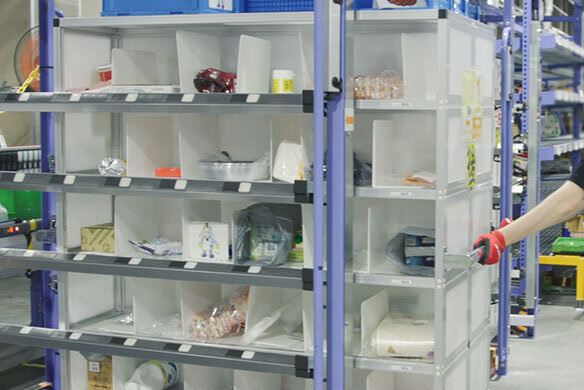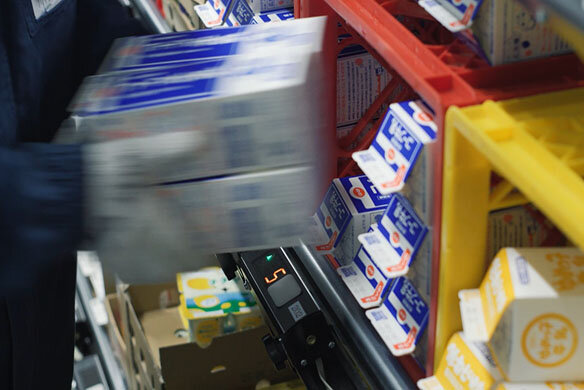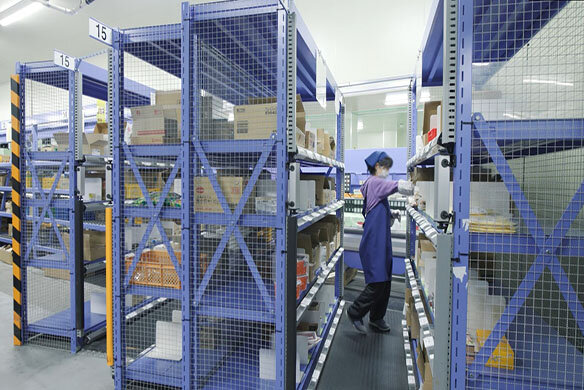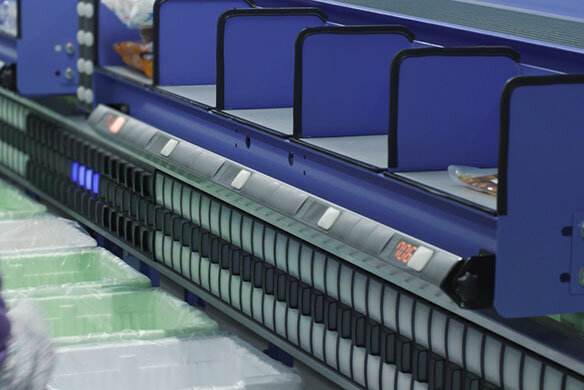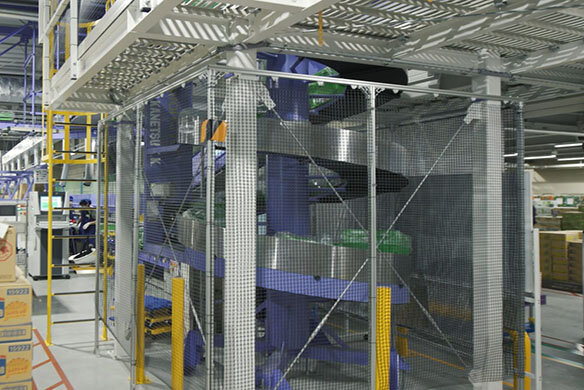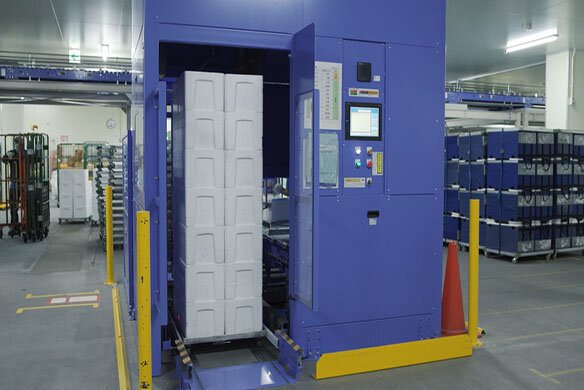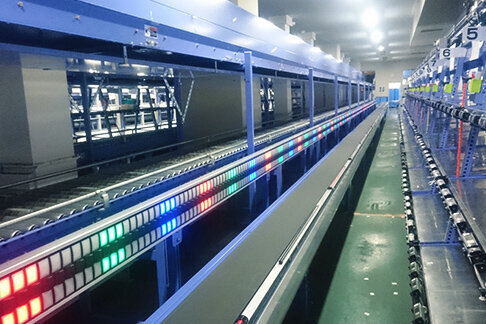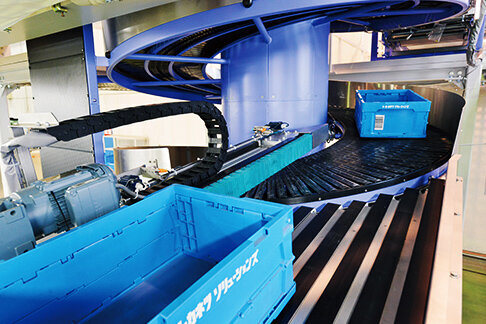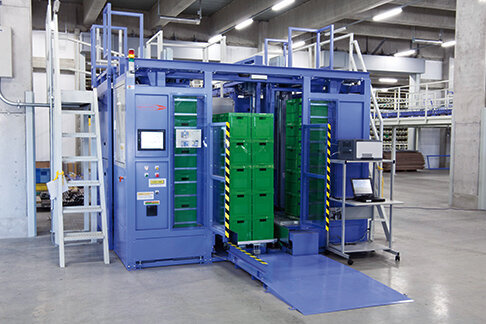Co-op Deli Niigata/Kyoei Ryutsu Co., Ltd. (Niigata Chilled Fulfilment Center/Niigata Grocery Fulfilment Center/Logistics System)
Challenges
- Stable supply to members
- Operations that never stop (chilled fulfilment center)
- Increase number of SKUs to be handled with merger of centers
Results
- Achieve stable supply of products in different temperature zones
- Careful, thorough project management enables continuing operations during construction
- Improved productivity with the latest SPD
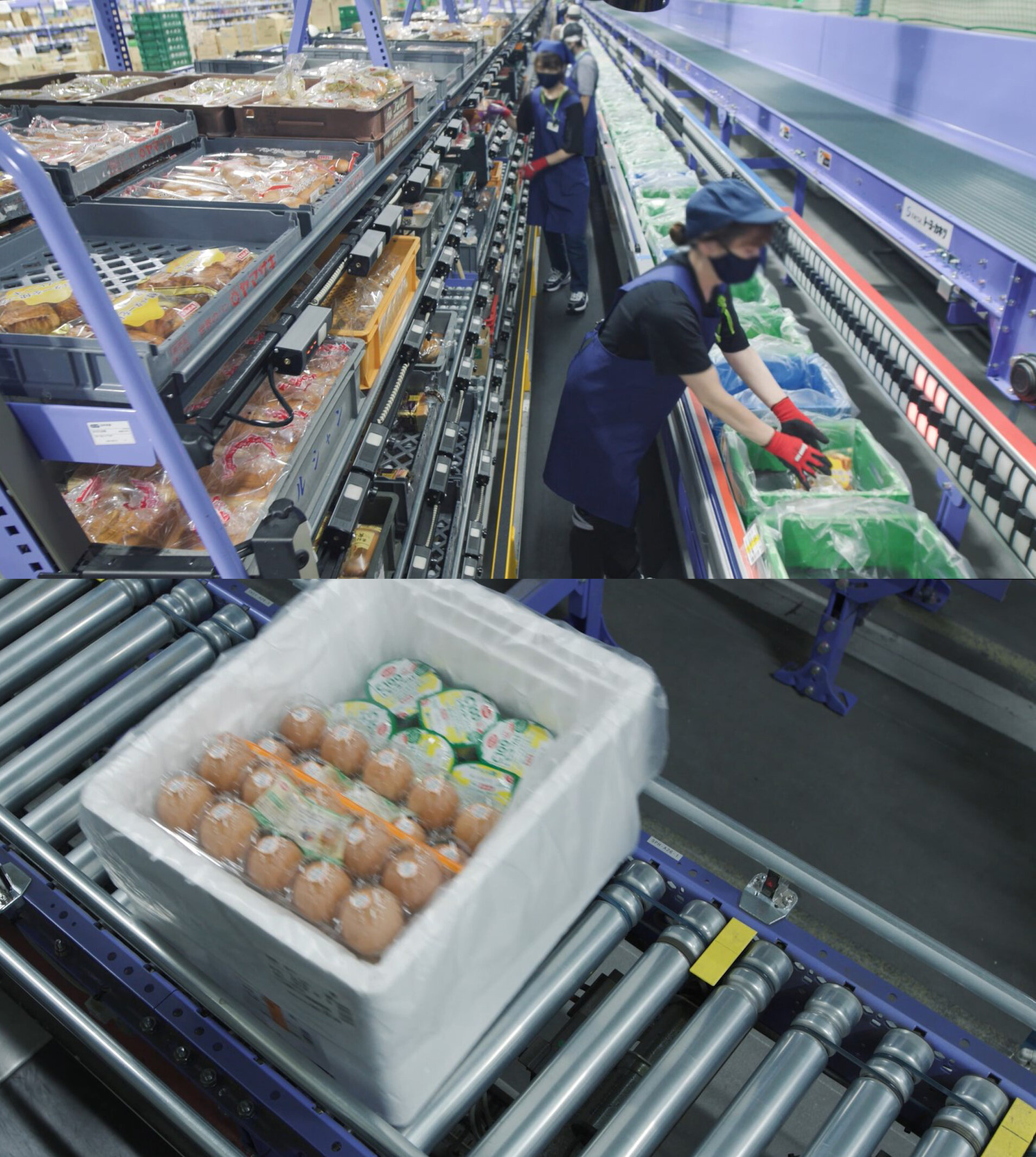
BackgroundOptimized Logistics and Distribution for Centers in Two Temperature Zones
Background
Optimized Logistics and Distribution for Centers in Two Temperature Zones
The New Co-op Deli Niigata made its debut in March of 2022 with the merger of two Co-op Centers in Niigata Prefecture. The two Co-op Centers, designed and optimized for high efficiency, were established to handle frozen and refrigerated grocery items, fresh produce and household items in different temperature zones.
*Niigata Chilled Fulfilment Center: Remodeled the existing center (products handled: chilled items, frozen items, fruits and vegetables)
Niigata Grocery Fulfilment Center: Newly established (Products handled: Food items that do not require temperature control, daily necessities, etc.)
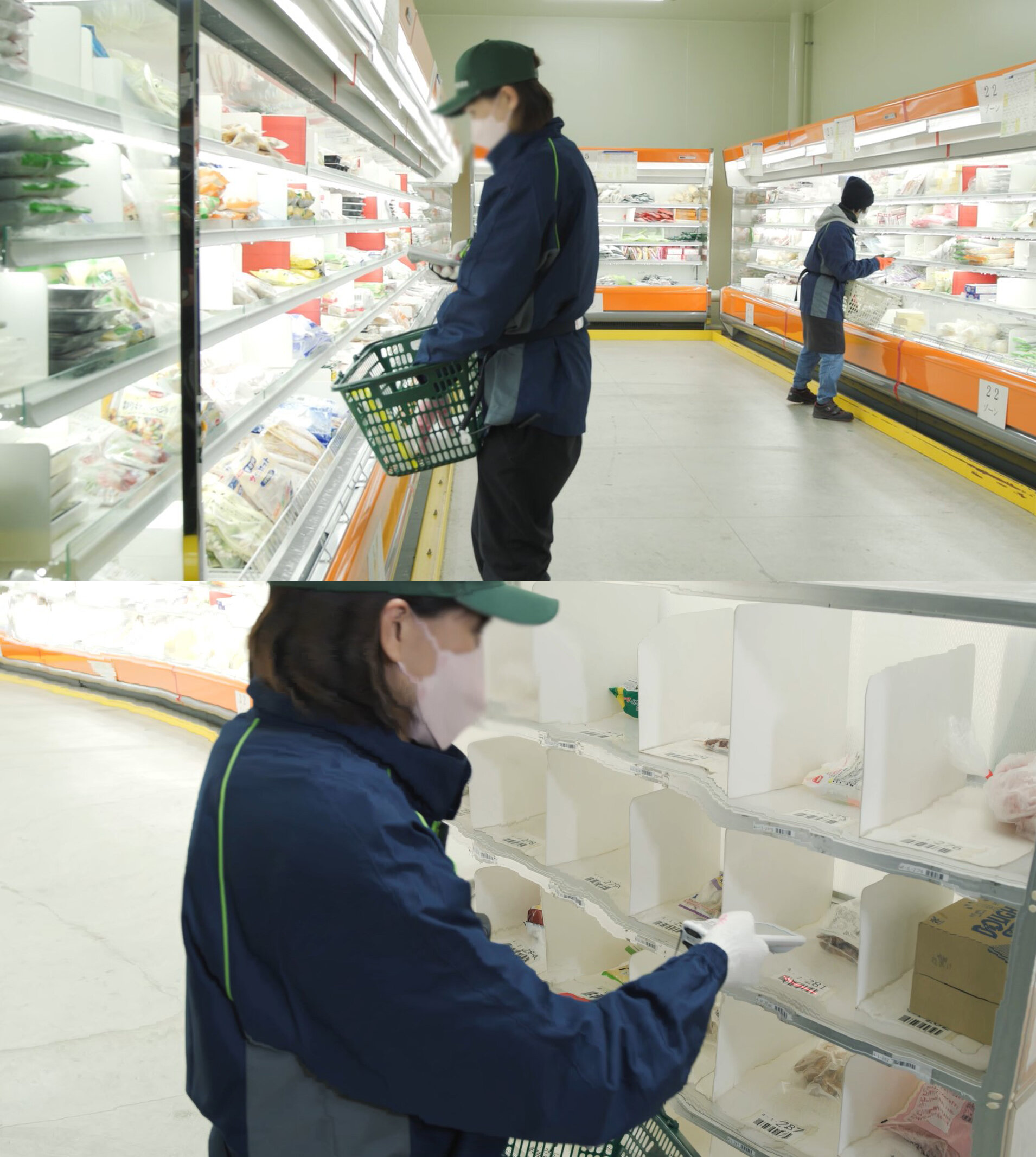
Multiple fulfilment methods are employed to thoroughly maintain food quality and enhance productivity.
Multiple fulfilment methods are employed to thoroughly maintain food quality and enhance productivity.
The logistics and distribution system at the existing Niigata Fulfilment Center was redesigned and improved. In order to continue operating during reconstruction, a phased approached was utilized with careful attention to project management.
The Center handles refrigerated, frozen and fresh food items in temperature-controlled zones in order to maintain food quality. The picking line uses the latest, highly productive Super Pick Director (SPD) to fulfill orders for refrigerated food items. The SPD makes it easy for anyone to easily understand and perform picking operations by just placing the displayed quantity of items from a rack to a tote where a guide light is lit. The picking line is divided into three zones based on frequency (high, medium and low). In the low frequency SKU category, shelves for replenishment are placed diagonally to the picking line in order to increase the number of SKUs that could be handled. Moreover, temporary racks allow for multiple orders to be picked in advance, which gives the operator some leeway to perform other tasks. After picking is complete, the order is placed with the bag in the shipping container. Stacking was previously done manually, but with the introduction of Nestack, it is now automatic, reducing headcount and easing the workload on operators.
Frozen products are picked in the same manner as refrigerated items using SPD. In the frozen food category, we also have an additional zone for ultra-low frequency items (very few orders) where items are picked from a frozen showcase in a separate location from the picking line in order to maintain the frozen condition. A handheld terminal is used to scan and place on LT carts. Errors have been virtually eliminated because all the operator has to do is scan and make sure the appropriate item is placed in the correct bay on the cart. When all bays are filled, the cart is transported to the line and placed at the gate. By standardizing the picking methods across temperature zones, picking errors are dramatically reduced because the operator just places items in order as shipping containers arrive in front of them. We stagger the picking of fresh produce to maximize utilization of the SPD line also used for picking of refrigerated items.
The Niigata Grocery Fulfilment Center was newly established to address an increase in the volume of products handled as one outcome of the merger, and is the center that specializes in products where temperature control is not necessary. Like the Chilled Fulfilment Center, we introduced the SPD line for highly stable and reliable picking operations. To avoid damage to other products, heavy items such as rice and beverages are picked using a handheld terminal and transported to the SPD picking line. A spiral conveyor is used in conveyor lines to transport items vertically while saving space. This frees up much needed storage space near the picking lines, allowing for easy direct replenishment right near the line.
High to medium frequency SKUs are picked from the rack behind the line and placed in the shipping container where the guide lamp is lit. Low-frequency products are picked in a dedicated area using an LT cart, and then placed at an LT gate. By picking in this dedicated area, the flow of picking is unidirectional, reducing travel distance, errors and burden on operators.
For bread and other bakery items, the SPD is used at a different time than normal operations in order to avoid crushing the items. Items that do not fit in a collapsible tote such as beverage cases and large household items are picked manually. With this combination of various picking methods, a variety of sizes and shapes of items can be picked easily.
Finally, the heights of the two types of collapsible totes are calculated automatically and stacked uniformly to ensure safe transport.
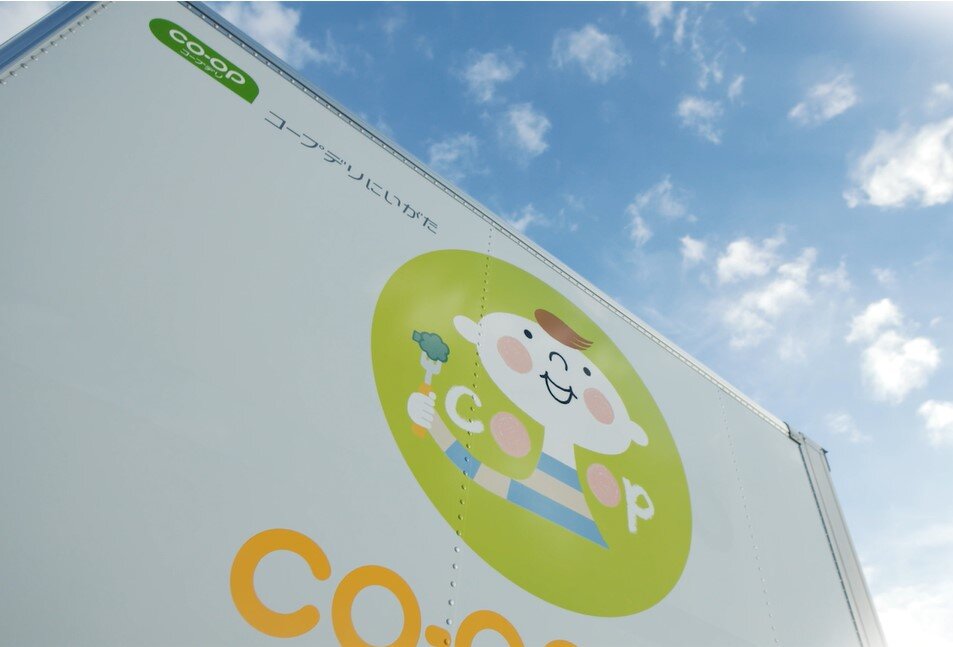
What’s Next?Our ultimate goal is to improve the quality of our items and service through improved efficiency, making our co-op members happy.
What’s Next?
Our ultimate goal is to improve the quality of our items and service through improved efficiency, making our co-op members happy.
Since the the center is primarily focused on distribution of food, we thoroughly maintain sanitation conditions by cleaning the collapsible totes, shipping containers and cold packs. Furthermore, we also do our part with respect to the environment by collecting and recycling empty boxes. In the event of disaster, we ensure safe and consistent supply of products by maintaining a fueling station on the Center premises.
Co-op Niigata was able to maximize the capability of both centers with the help of Toyo Kanetsu’s material handling expertise and solutions, along with processes by Kyoei Distribution. With food safety a top priority, we continue to work to improve quality of service and increase efficiency all while keeping the satisfaction of members top of mind.
* Source: Based on an interview conducted July, 2020. Data, organizational departments and personal names appear as they were at time of interview.
Products and Services Introduced
